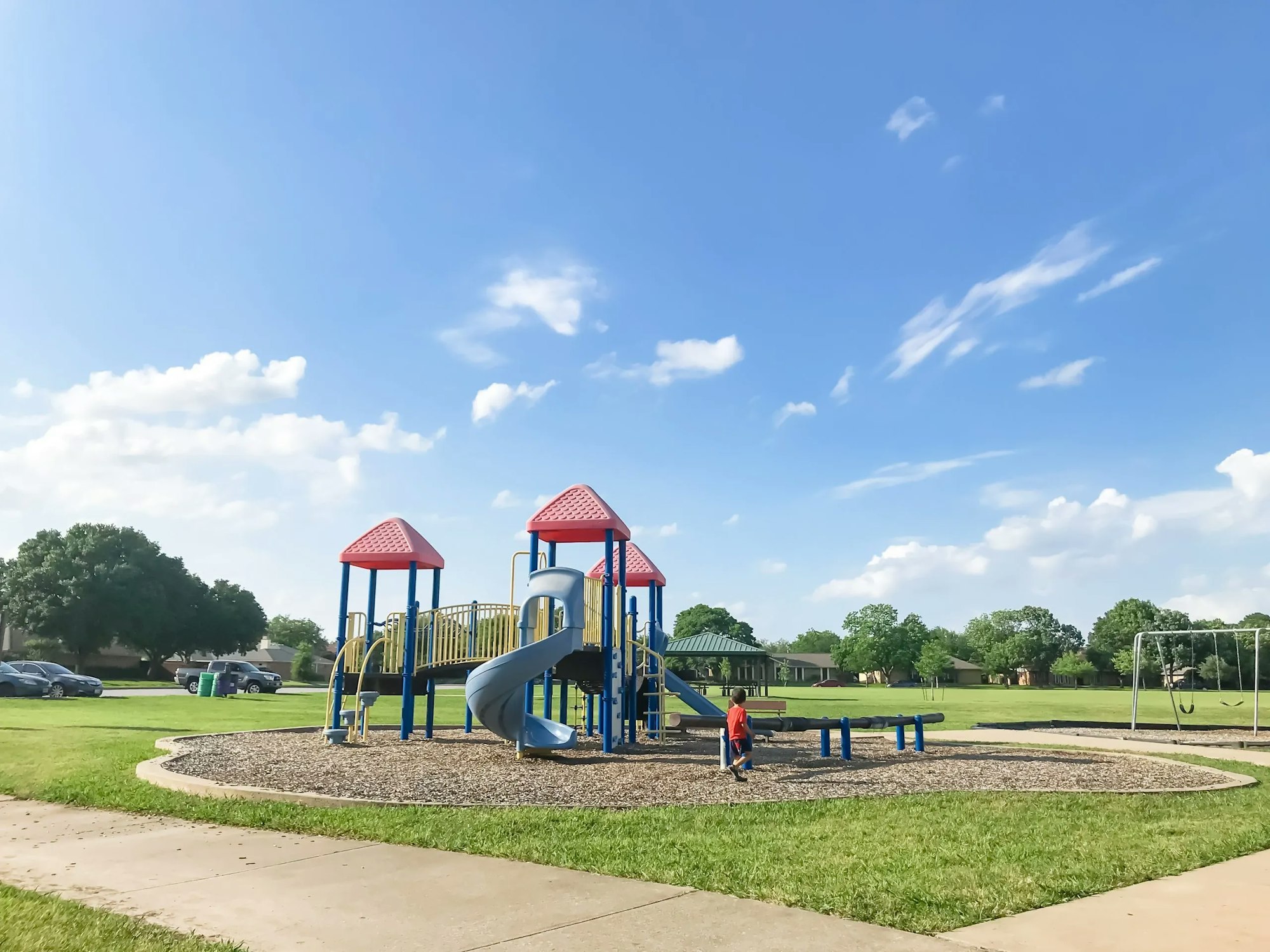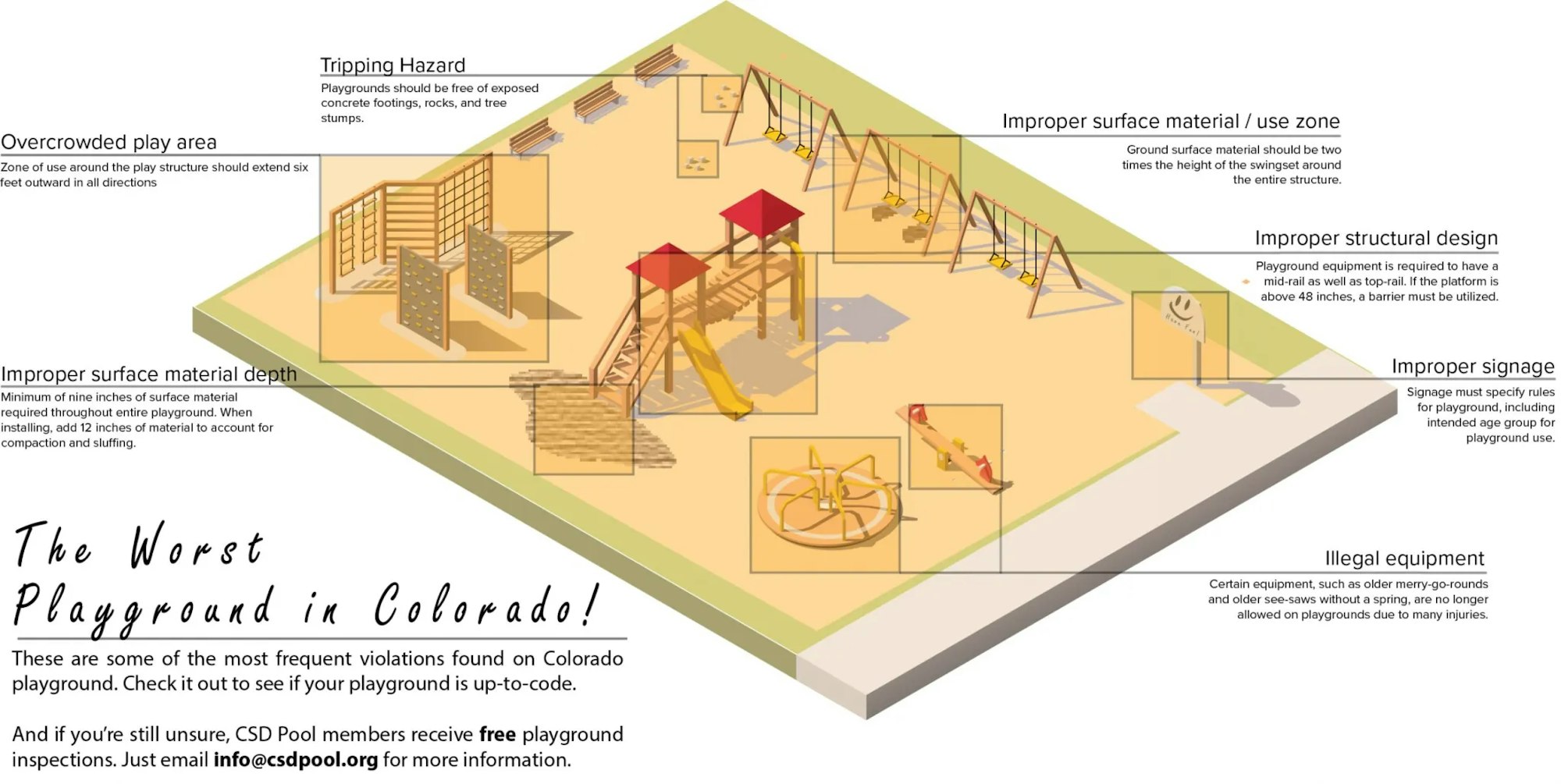New Playground Designs Promote…Risk?

March 16, 2022 | Adam Johnsen
Risk-based play has led to updated equipment, but safety issues remain
A new playground opened in Huntington Beach, California in January that updates the traditional playground fare of slides, monkey bars, and swings. This new community park, complete with a rope tunnel, giant jungle gym, and zip-lines, is unique because it encourages children to engage with new kinds of playground equipment that function specifically to promote risk-based play.
However, these new additions are actually safe, controlled environments that can prove beneficial to developing youth—and they might be the future of all playgrounds.
When it comes to keeping children safe, it’s easy to think that reducing risk at all costs should be the top priority. However, studies show that risk-based play in other mammals is critical for social development and emotional regulation of fear and anger.
For example, as children grow up and encounter real-life dangers and interact with others, their experience at a young age is what helps them handle those situations and not succumb to negative emotion. Beyond that, risk-based play in early childhood helps develop self-confidence, resilience, and even risk management skills.
Naturally, playgrounds are the perfect spot to engage in these types of controlled risk. And yes, even though risk-based play can be just that—risky—when provided with a regulated outlet for the behavior, such as on a specially-designed playground, children are able to experiment and push their boundaries without knowing the outcome while remaining safe.
Safety First
As outdoor playground manufacturers are upgrading their catalogues to include larger and more dynamic playground components, safety needs to remain a top priority for any organization seeking to make some upgrades to their current playground or install a brand new one.
Even when purchasing playground equipment from a verified manufacturer, organizations should still make sure they adhere to safety standards. According to the Consumer Product Safety Commission, more than 200,000 children ages 14 and under wind up in the emergency room due to injuries associated with playground equipment each year.
In fact, nearly 80% of playground injuries are caused by falls. The most common hazards that any organization with a playground should look out for and periodically inspect include:
- Improper ground surfaces – there needs to be a minimum of nine inches of material such as wood chips, mulch, or sand on a playground, and 12 inches are recommended for proper compaction and movement. Mats made of safety tested rubber or rubber like materials are also adequate. Playgrounds should also be free of exposed concrete footings, rocks, or tree stumps.
- Overcrowded play areas – area under and around equipment should be a minimum of six feet in all directions. Swing sets should be twice the height of the suspending bar both in back and front of swings. Structures more than 30 inches high should be at least nine feet apart.
- Unprotected elevated areas – platforms higher than 30 inches should have guardrails or barriers.
- Head entrapment spaces – openings between rails, bars, rungs, and the tops of cargo nets should be less than 3.5 inches or more than nine inches.
- Sharp points and edges – Equipment should be free of protruding bolt ends, S hooks, and other sharp edges. Protrusions greater than 1/8 inch are considered unsafe.

Other common safety hazards that often go overlooked on playgrounds include improper signage, trash and litter not properly disposed of, and missing nuts and bolts.
Surprisingly, even when purchasing a brand new playground, there can be reason for pause. Always remember to conduct an inspection of the playground before taking possession of equipment. This helps work through a predetermined checklist of items to inspect while the contractor is still responsible for the equipment.
For example, common issues of new equipment include many of the same shortcomings of playgrounds that have been in use over time. This includes, loose torque bolts, under-installed surface material, playground equipment installed at the wrong heights and not to the standards, and surface depressions which can allow water to pool, resulting in mold damage.
Safety Consultations
CSD Pool members have access to free playground inspections. Our certified playground safety inspector is available to make sure organizations’ playgrounds are up to code and to identify any potential safety hazards. Upon completion of an inspection, members will receive a detailed report outlining recommendations for improvement. For more information and to inquire about inspections, visit csdpool.org/safety or send an email to safety@csdpool.org.

